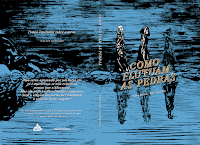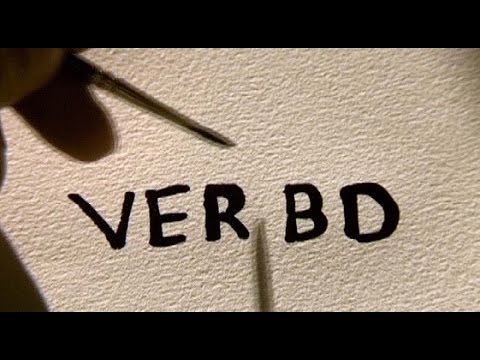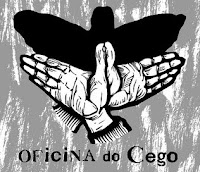 Now that we are finally seeing reprinted most of Kirby’s later work – the wonderfully touching and sparkling, though over-the-top, operettas of the Fourth World, Kamandi, The Eternals, Devil Dinosaur and even O.M.A.C. – and a few years down the line after the publication of stuff like Blue Bolt, or more recently, Silver Star, the collection of early odd-jobs such as The Comic Strip Jack Kirby, not to mention the Omnibus (Marvel) editions of the most known super-heroes that came out of his inkwell, and the myriad of books dedicated to his art and creations, the time has arrived to have a one single volume that can act as a catalyst and anchor to his overwhelming output. Mark Evanier’s brought that point home with the simply, yet effectively titled, Kirby. King of Comics.
Now that we are finally seeing reprinted most of Kirby’s later work – the wonderfully touching and sparkling, though over-the-top, operettas of the Fourth World, Kamandi, The Eternals, Devil Dinosaur and even O.M.A.C. – and a few years down the line after the publication of stuff like Blue Bolt, or more recently, Silver Star, the collection of early odd-jobs such as The Comic Strip Jack Kirby, not to mention the Omnibus (Marvel) editions of the most known super-heroes that came out of his inkwell, and the myriad of books dedicated to his art and creations, the time has arrived to have a one single volume that can act as a catalyst and anchor to his overwhelming output. Mark Evanier’s brought that point home with the simply, yet effectively titled, Kirby. King of Comics.
Kirby. King of Comics is a biography of the American author of Austrian descent, that spreads in seven simple chapters, divided chronologically, with both a preface and afterword of a more personal nature (Evanier’s) that bookends the account of Kirby’s life and artistic path, and an introduction by Neil Gaiman.
It is difficult to believe that anyone with even the slightest hint of interest in (American or English-language) comics from a historical or genealogical perspective has not heard of Jack Kirby. They may not like his work, but they have surely come across his name and work in some way. It is not an overstatement to say that Kirby influenced just about everyone in North-American (and beyond) action comics, and the scope cannot be confined solely to the super-hero kind. Many independent artists, that would strive to take comics into more intimate directions and less action-packed paces, or simply wacky concepts to keep pages flowing still show to be trailing on a stylistic territory opened by Kirby. Paul Pope and Jeffrey Brown, or Evan Dorkin and Shannon Wheeler should suffice as examples. I wrote territory, but perhaps I should have written territories. Sure, Kirby is mostly remembered due to his work on super-heroics and space operas, crackling as much as they could, but one must not forget that he had more than one stint at different genres altogether: war comics, westerns, horror, monster, crime, and, last but not the least, for he actually invented this genre (with Joe Simon, his Captain America co-inventor buddy), romance comics.
According to one school of the philosophy of language (I’m following the lessons of a Portuguese philosopher, Fernando Belo), any text (and here I include also visual texts such as comics) comprises three dimensions. A narrative dimension, in which you find the constellation of actants (i.e., the agents of the events portrayed in the narrative), a discursive dimension, in which the grammars of enunciation come forward (or the political perspectives and Weltanschauung of the work itself), and a gnoseological dimension, in which still another constellation is offered, that of concepts. I’m sure that everyone is able to pinpoint the importance of Kirby’s narrative contributions. All in all, despite the contribution of the legion of artists that constructed the many characters that people the so-called universes in the major companies, I do think that it’s crystal clear that it was Kirby who came up with the foundation of the uniting forces of the said-Universes. Although in his time Kirby was met with utter despise and foolhardiness of his editors, producers and directors, and witnessed the cancelling of his titles, and the annulment of his long-term projects - Moore, Gaiman and Morrison were lucky -, and despite the fact that they seemed slightly overdramatic and even hackneyed at some point, time and again, writers that came after returned to his characters, his plotlines, his structural, uniting grid of what composes the Marvel and DC Universes: see Marvels, the Earth X trilogy, Gaiman’s Eternals, and so on and so forth (actually, even if Kirby was not that much worried in providing a coherent mesh for those universes, he was the one who planted the seeds of that consistence to come; and even if many of his series ended uncompleted, he aimed at an utter completeness). Who, working within these “universes”, is not a Kirby inheritor? Yet another facet of the narrative dimension is the visual techniques, the style, and I guess this is the easiest point to understand where Kirby was innovative or at least the artist who brought some of those techniques to incredible and, more importantly, “imitatable” heights: the splash page, the double splash page, the dynamics of bodies jumping back and fro from out of the panels, the dramatic poise of the characters, the flamboyant entrances, the overwhelming contortions in action, the bombastic tirades, and the “energy crackles”
Kirby’s discursive dimension is also extremely solid. Sure, these are (mostly) super-hero comics, men in colourful tights, but that does not mean that a perspective on morals (not morality), human values and ways of acting within the body politic are not present. And it is not Manichaeism. Kirby made clear, no doubt, who the good guys and who the bad guys were, but it was never Manichaeism (not as it was with many titles before and after his time; it would suffice to check the early Superman’s personality or the early Batman’s almost aloof crime-fighting habits to perceive this). Even if one is reminded of the New Genesis and Apokalips dichotomy (from The New Gods), and then thinks of Orion and Mister Miracle, one sees the open-ended passages from one world to the next (and its views, positions, morals, etc.). His characters live with smaller human torments (no orphan trauma as in Kal-El and Bruce) and therefore, closer to us. Other authors would take the gray areas of hero-hood to other extents, like Kurtzman in his ‘1950s war comics, but the cover to The Guys in the Foxhole no. 1 (1954) shows that Kirby was attempting similar directions. Many created equally complex plots around human weaknesses within genres of grandeur, but Sky Masters of the Space Force (illustrated with Wallace Wood) managed to reach those heights within the confines of the science-fiction genre, and I learn with Evanier that most of its writing was Kirby’s, and not Dave Wood’s. Moreover, Mark Evanier expounds on how and in which direction Kirby’s own plans for his characters would bloom before they were transformed - or should I say hijacked? - by the power-that-be (and, despite Evanier’s efforts in making the reader sure that he takes no position regarding “who’s fault it was”, in the many, many problems Kirby had with Lee and Marvel, authorship included, Stan Lee does not end in the best light). For instances, his plans for a mild, almost angelic Silver Surfer, his contribution towards the anguished souls of Ben Grimm, or his monsters, show some of the principles and ethics at stake in his writing. The biographical part of the book makes sure we drive many of these points home, interlacing these projects with Kirby’s work and life ethics (as when, the legend goes, he asked DC for the least selling title to avoid someone from losing his job. Is this apocryphal? No matter, it’s still true to Kirby). But the most important dimension in Kirby is the gnoseological. The concepts he came with. Oh, yes, for he did came up with concepts. These concepts were never introduced as tangible, independent notions. They are permeated in his creations. It’s as if Kirby drew directly from the heart of Myth and let it all pour into his fictions. It is not that important to point out the unscholarly, sometimes misinformed sources of that mythology. It doesn’t really matter if Kirby didn’t watch this film or didn’t quite grasp the whole significance of that film. Kirby was a creator, a moulder of matter and character(s). Matter that would become the fertile soil in which most of contemporary - super-hero/action/fantasy/etc. - comics are grounded. Characters that gained a life of their own and were sought by many authors that came afterwards, up until today (and into the foreseeable future, surely). The high ground he opened for the institution of the “good vs. evil” battles is part of that gnoseology. His view of a universe in which everything is connected, in which causality is paramount, in which perfection is attainable with both sacrifice and grace, are models who could, should or are emulated.
But the most important dimension in Kirby is the gnoseological. The concepts he came with. Oh, yes, for he did came up with concepts. These concepts were never introduced as tangible, independent notions. They are permeated in his creations. It’s as if Kirby drew directly from the heart of Myth and let it all pour into his fictions. It is not that important to point out the unscholarly, sometimes misinformed sources of that mythology. It doesn’t really matter if Kirby didn’t watch this film or didn’t quite grasp the whole significance of that film. Kirby was a creator, a moulder of matter and character(s). Matter that would become the fertile soil in which most of contemporary - super-hero/action/fantasy/etc. - comics are grounded. Characters that gained a life of their own and were sought by many authors that came afterwards, up until today (and into the foreseeable future, surely). The high ground he opened for the institution of the “good vs. evil” battles is part of that gnoseology. His view of a universe in which everything is connected, in which causality is paramount, in which perfection is attainable with both sacrifice and grace, are models who could, should or are emulated.
Not all is roses, thought. We should also look into the darkest or feebler aspects of Kirby’s writing – and using arguments about his “time” or, worst, the zeitgeist, is tantamount to an avoidance of a balanced discussion. The deus ex machina device (in narratological terms, not in terms of the story) is used once too often; unsurprisingly, one might say, for it is almost an intrinsic element of the main genres Kirby worked on. But one sees also a certain degree of hierarchization among men and between men and other creatures. We understand that morality is sometimes based on physical courage, and that more often than not matter overpowers mind (precisely because the hero makes good use of the former, and the evil villain misuses the latter), and, being evil an identifiable, palpable reality, the hero justifies any and every action he takes.
In this light, a first overall look at the book might make one think that the title follows uncritically a cliché and that perhaps this is just one another hagiography to add to the usual writings around Kirby. However, this is not the case. First of all, because such title, bestowed upon Kirby, was not unearned. True, it might have begun as a friend’s private joke, but it did not come about in its final form without reasons. The main reason is quoted in the text, and on several occasions: the way comic books were made changed after the forty-plus years of hard labour by Kirby in them, whether for (what would become) the major companies, Marvel and DC, or for numerous smaller companies. His original input had to do with page layouts (which were thought as for pages, and not as collected strips on a page), the ubiquitous foreshortening techniques and popping action of the bodies he drew, the sheer power of the onomatopoeias, the motion lines and, once again, oh yes, the signature “Kirby dots” or “energy crackles” (one cannot tire of repeating these words).
Despite the many anecdotes spread throughout the book, that never make us forget that there was a living, breathing (sometimes panting with frustration and just rage) man behind his books, Mark Evanier keeps to the very end a more personal confession, which shows how much Kirby meant to him, not only on a professional level but also as a human model. However, this is not a hagiography, as mentioned before. It is not a scholarly volume either. While at a personal level I would prefer seeing a more consolidated and profound analysis of Kirby’s specificities, whether artistic, authorial, or even ethical (within his creations), one actually understands that many of the clues towards that sort of secondary reading are made clear by Evanier. All things considered, Kirby. King of Comics is a terrifically balanced book about the creator and the man.
Given the fact that this is about one of the Founding Fathers of a large part of American modern comics, and of the most imitated and admired names of the business (I’m sure detractors and non-sympathizers exist, but that would bring about the question of comics genres, and no doubt politics and cultural-related issues that are beyond the scope of both this book and the present review), perhaps one would expect a much, much stronger presence of the image dimension as well. Something along the lines of The Art of Charles M. Schulz (Chip Kidd, Pantheon, 2001) or Masters of American Comics (Carlin, Karasik, Walker, eds., Hammer Museum/Moca/Yale UP, 2005, in which Kirby is included): with a bundle of sketch pages, rough pencils, exploded panels, photos, paraphernalia, and whatnot of “Kirbyana”. These things are present, undoubtedly, but in a lesser number and clout than expected. Most of the design is somewhat subdued. Lots of covers are presented but they’re rather small, and when pages are wholly occupied by images  it’s usually by… pages of the comic books. However, there are enough non-comics documents to paint a wider portrait of Kirby, the man, especially Kirby the caring husband, with illustrated letters and pencils portraits done for his wife Roz. A magnificent ten page story entitled “Street Code” is fully included, in an excellent reproduction. Created by Kirby in 1983 for a fanzine, it makes us wonder what would have happened if Kirby had put his heart into more personal subjects (similar to Eisner, perhaps). Unfinished pages, censured pages, and original pages that would be “de-Kirbyed” later on are also included. There are storyboards from his later stints, character studies, and personal works. But most importantly, all the used images – as well as the epigraphs for each chapter, illuminating and that by themselves would serve up a firm portrait of the artist - are judiciously chosen and intelligently organised, making the reading of the text well-complemented and finding a pertinent balance.
it’s usually by… pages of the comic books. However, there are enough non-comics documents to paint a wider portrait of Kirby, the man, especially Kirby the caring husband, with illustrated letters and pencils portraits done for his wife Roz. A magnificent ten page story entitled “Street Code” is fully included, in an excellent reproduction. Created by Kirby in 1983 for a fanzine, it makes us wonder what would have happened if Kirby had put his heart into more personal subjects (similar to Eisner, perhaps). Unfinished pages, censured pages, and original pages that would be “de-Kirbyed” later on are also included. There are storyboards from his later stints, character studies, and personal works. But most importantly, all the used images – as well as the epigraphs for each chapter, illuminating and that by themselves would serve up a firm portrait of the artist - are judiciously chosen and intelligently organised, making the reading of the text well-complemented and finding a pertinent balance.
Evanier makes his points quite clearly, not only on Kirby’s own reactions every time his unstoppable output would come against the unmovable tight vision of his editors and the like, but also on the repercussions his creations would have subsequently. For some time now, Alan Moore has been exploring the notion that Imagination is a real spatial entity that one can draw from (see Promethea, The Black Dossier, and so on). Kirby, in a certain sense, was not tapping into that entity as much as he was patterning and styling it. More than a “King” (of a certain area of comics), Kirby was the voice in the desert, feverish with his visions, bleeding out ink and traces on paper, the prophet of a Kingdom to come and that has been realized throughout the last decades with all the overwhelming, awe-inspiring, super-hero masses-moving projects, from Squadron Supreme to Crisis on Infinite Earths, from Astro City to Kingdom Come, from the stillborn Twilight of the Superheroes to the latest Final Crisis. Even the fact he left behind him unfinished symphonies - as all prophetic writings should be – points to that nature of his work. Prophet or King, Harbinger or Creator, there should be no doubt: his Kingdom has come.
16 de maio de 2008
Kirby. King of Comics. Mark Evanier (Abrams)
Notes: Thanks to Samantha Sizemore, from Harry N. Abrams, for the review copy of the book. And a special thank you (very much!) to Beth Davies, for her advice on the organization of this post (I'm afraid I have not followed it correctly though, and all English blunders are of my responsibility).
Publicada por
Pedro Moura
à(s)
10:01 a.m.
![]()
Etiquetas: Academia, EUA, Mainstream
Subscrever:
Enviar feedback (Atom)


















Sem comentários:
Enviar um comentário